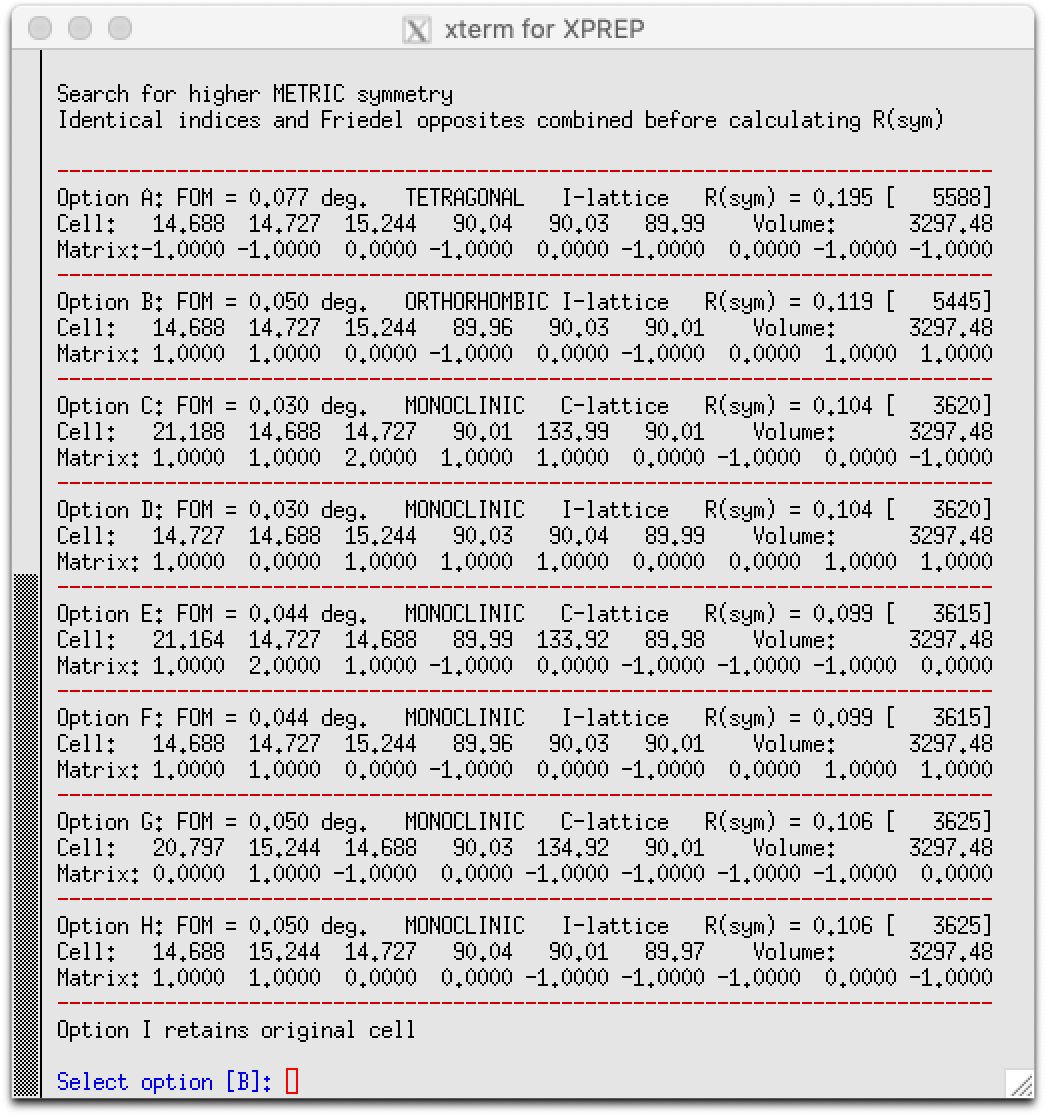
Notice that the R (sym) for tetragonal-I (option A, above) is poor – almost
twice that of any other suggestion. As noted by Hao et al. (2005), between crossed polarizers
the crystals did not show optical extinctions characteristic of tetragonal symmetry. Thus, even
prior to data collection, tetragonal seemed unlikely. Lower symmetry and twinned was suspected.
The next highest symmetry is orthorhombic-I (option B), for which XPREP warns of a
B-superlattice:
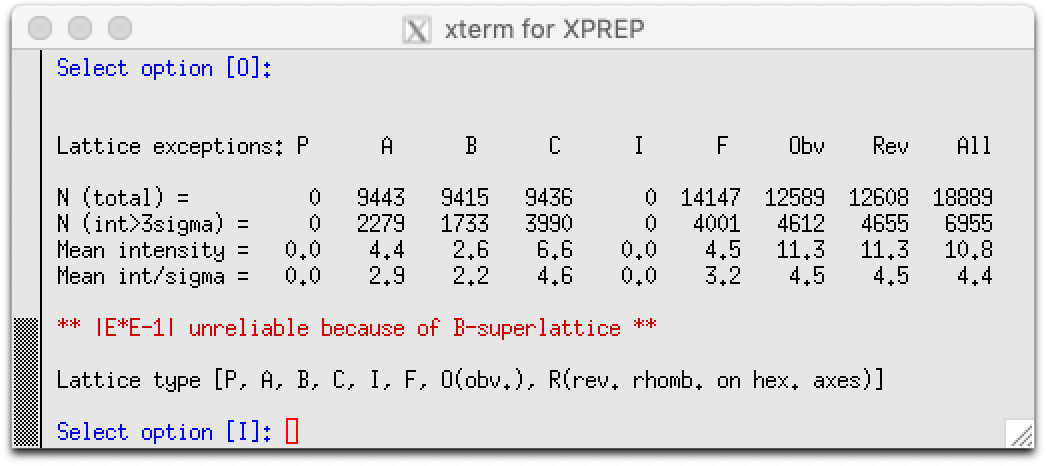
Nevertheless, it goes on to suggest a space group of type I bca (#73 in the International
Tables, vol. A):
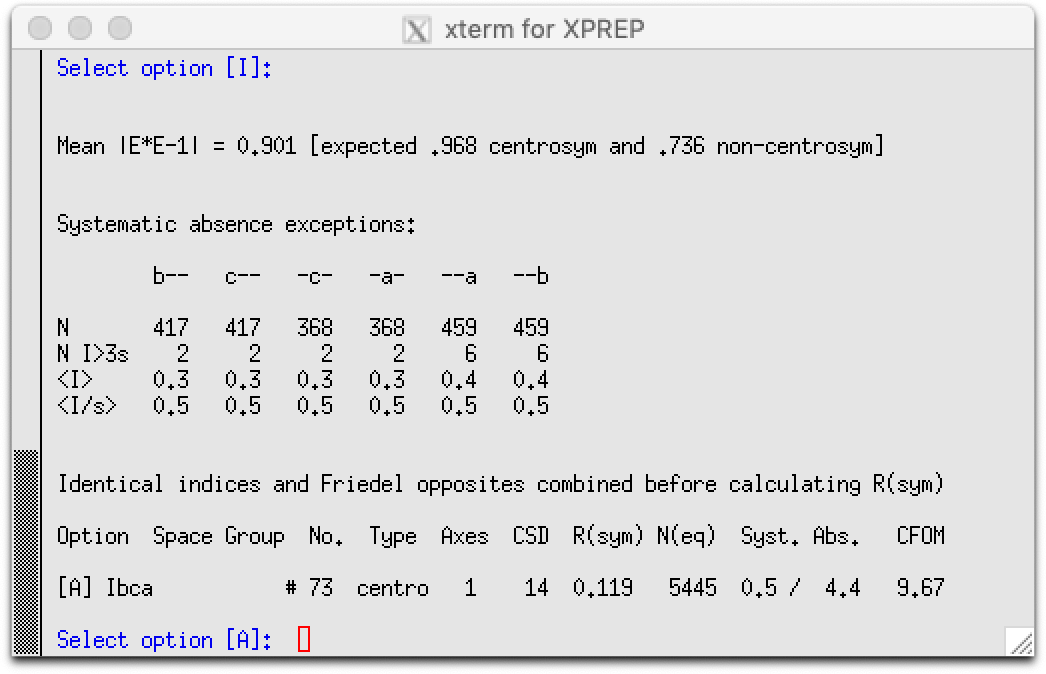
I bca was a dead end. All attempts to find a chemically reasonable solution using
this symmetry failed (feel free to try if you like). The next step is a further lowering of the
symmetry to monoclinic-I. Since all the cell angles are about 90°, XPREP suggests
three alternatives, all having similar R (sym). The transformation matrices that map
the original triclinic-P cell to these monoclinic-I settings (options D, F, H) are:
D =
1
0
1
1
1
0
0
1
1
; F =
1
1
0
-1
0
-1
0
1
1
; H =
1
1
0
0
-1
-1
-1
0
-1
Note that option F gives the same transformation matrix as option B (orthorhombic-I ).
It also has the lowest R(sym), though not by much. The worst case scenario is that we’ll need
to try each of these three settings. The right choice should be obvious because it will be the only
one that gives a recognizable solution. Since option F has the lowest R(sym), we’ll try it first:
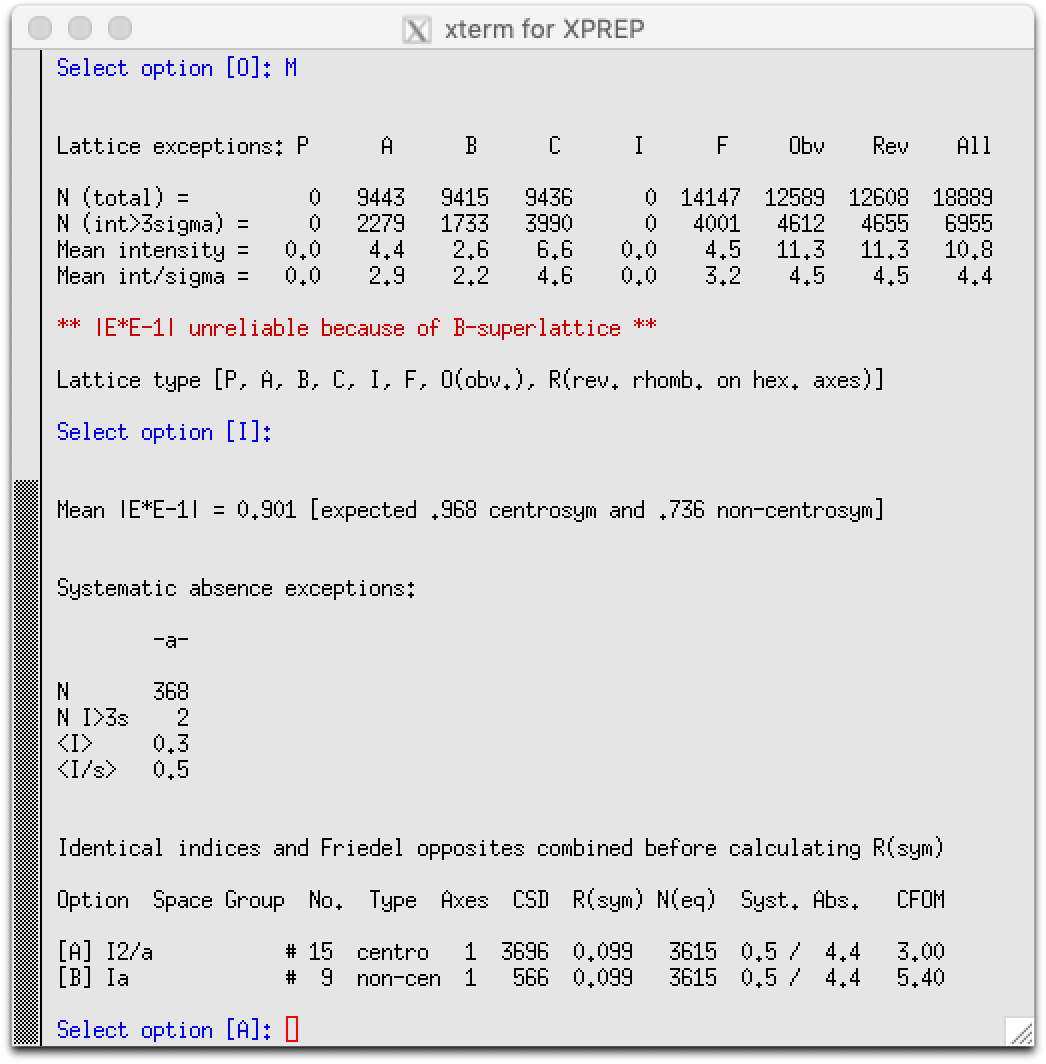
XPREP tries to force orthorhombic again, so be sure to override it to monoclinic. It should
then suggest I2/a. Go ahead and generate files to solve the structure, but be sure to specify
SHELXD, not SHELXS.
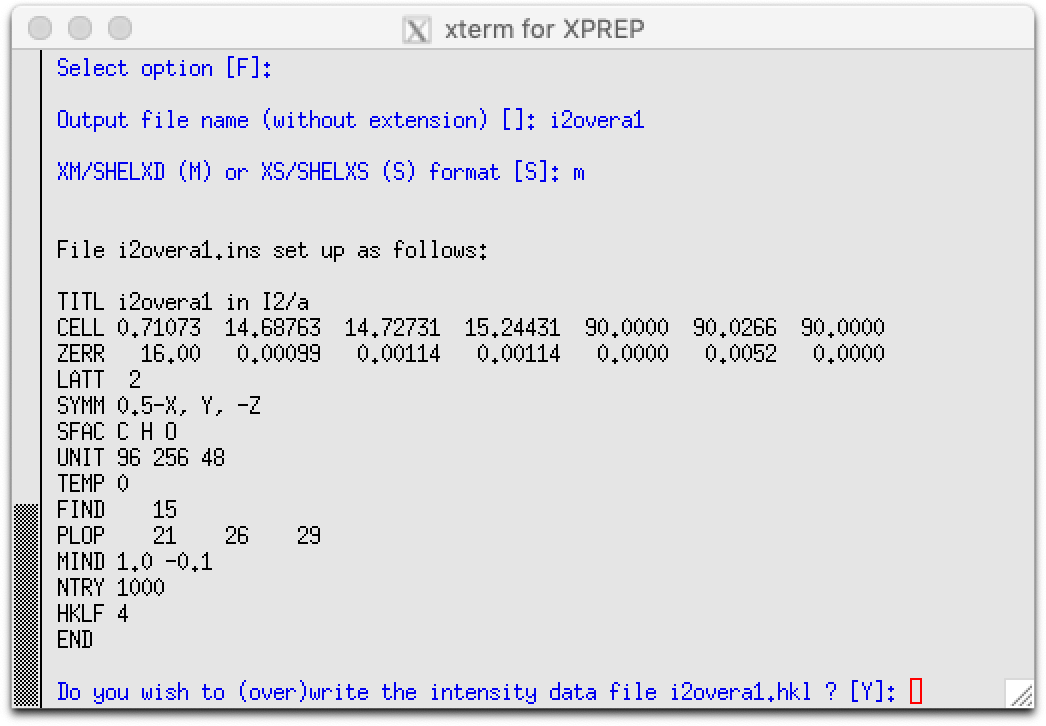
XPREP suggests writing a new file with data transformed for the chosen setting. You could
do that if you like, and it would work. However, XPREP scales down the F2
and σF2, with potential loss of precision. It's better to transform the data
yourself. The unix-utility awk (which is also available for
Windows via the Cygwin project ) does the trick:
awk '{printf "%4s%4s%4s%8.2f%8.2f\n", $1+$2, -$1-$3, $2+$3, $4, $5}' triP.hkl > monI.hkl
If you compare such a file with one written by XPREP, what do you notice ? Ten points to
Gryffindor if you spot the difference.
In section 3 we'll 'solve' the structure in I 2/a using SHELXD .
In section 3 we'll 'solve' the structure in I 2/a using SHELXD .
1: Introduction
2: Analysis and file set up with XPREP
3: Solve the structure in I2/a using SHELXD
4: Find true space group symmetry using Platon
5: Generate 'HKLF 5' format dataset
6: Complete four-fold P2/n twin refinement
2: Analysis and file set up with XPREP
3: Solve the structure in I2/a using SHELXD
4: Find true space group symmetry using Platon
5: Generate 'HKLF 5' format dataset
6: Complete four-fold P2/n twin refinement